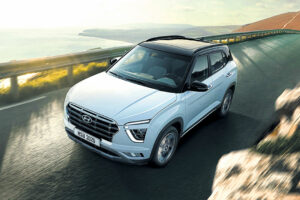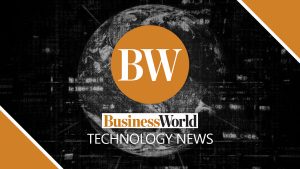A new day for Hyundai

“EXACTLY ONE MONTH and two weeks ago,” Lee Dong Wook recalled with a smile after he was asked when he was tapped to head Hyundai’s passenger car business in the Philippines. “You have to move to the Philippines,” he remembers being told.
It’s an assignment that is both daunting and promising.
At one point, Hyundai was the third most popular brand in the Philippines by sales volume until a precipitous fall from grace overtly caused by a number of problems — including an acute lack of model units. I’ve spoken to a dealer principal who rued that even newly launched models were not supported with inventory.
The situation had gotten so bad that some dealers were putting in other brands in their previously Hyundai-exclusive showrooms. On the other hand, the same group responsible for Hyundai had brought in the Changan automobile brand in 2020. Just last January, Hyundai’s passenger car business literally hit bottom with a thud. That month, not one Hyundai automobile was sold. Zero.
For the South Korean auto giant, this obviously has to change.
“The Philippines is one of our major markets in Southeast Asia, and we have seen such substantial growth here in the past. Obviously, we would like to increase our growth, business and partnership with various of shareholders in the country,” said Mr. Lee in a speech to a handful of motoring media last week. “Hyundai is coming back here to the Philippine market with a refreshed brand and high-quality standards to connect local customers to community.”
Over about two hours, Mr. Lee patiently and gamely fielded questions pertaining to how the next chapter of Hyundai will be like in the Philippines.
First, Hyundai Asia Resources, Inc. (HARI), responsible for the brand since 2001, will be turning over the passenger and light commercial vehicle portfolio to Hyundai Motor Philippines, Inc. (or HMPH). However, HARI will retain control of Hyundai’s thriving truck and bus business.
Mr. Lee, who brings a wealth of international experience borne of stints in India and Malaysia, also crucially has had responsibility for Asia-Pacific territories.
Asked by this writer if he had already met with HARI President Ma. Fe Perez-Agudo, he replied, “Not yet, but I think we’ll have a chance to. We already have a good relationship when I was working for (Hyundai Asia Pacific) from 2013 to 2019. I don’t hesitate to meet with her. We’re already friends.”
Mr. Lee was candid, but also sometimes appeared to temper his words. “It’s not a takeover,” he corrected. “We’re building up a business. It’s a totally different concept.” Referring to Ms. Perez-Agudo, he declared, “We are partners; I’m focusing on passenger cars, Miss Ma. Fe is focusing on trucks and buses. Together we’re Hyundai family.”
Still, Mr. Lee is cognizant of the work to be done to bring Hyundai back to a position of leadership — or at least where the brand had peaked in terms of market position. “Customer satisfaction and experiences will be the benchmarking rules for (the) new Hyundai in the Philippine market,” he continued in his speech.
He spoke of working on customer experience, customer satisfaction, and rebuilding the brand. But, first things first. Perhaps one of the most urgent asks from beleaguered dealerships is making vehicles available to be viewed — and to be sold. Indeed, it’s hard to sell cars when even the showroom has none.
“Dealers would say ‘I don’t have any cars for display in my showroom. So many customers visit our showroom, and the customer (would ask) when can I buy our Hyundai cars?’” shared Mr. Lee. “I gave a promise to our dealer principals like this: My first role is to fill up our cars in your showroom display, then customers will visit (so) they can enjoy and see the choices. We will move forward.”
HMPH currently has 39 dealerships, with a plan to grow the number to 44 by yearend.
As for other brands encroaching in Hyundai showrooms, Mr. Lee compared it with going to an Apple store for an iPhone and a Google shop for a Google device. “When our customer visits our showroom dedicated to Hyundai, I don’t want to give them confusion,” he stated.
I asked if he was going to ask them to move. “Yes. It’s related to customer satisfaction. This situation gives confusion to customers,” he repeated.
Another persistent problem that has long undercut and hampered the brand’s growth is the proliferation of gray market imports. “We cannot stop gray market importers immediately. But we have to try continuously. We will minimize the number, like what we did in Vietnam. We have to protect our customers and dealers.”
Mr. Lee said he even so far as to check on the vehicle identification numbers of the “three to five Starias” that have made their way into the country through parallel importers. Remember that HARI hasn’t even officially launched the MPV yet. “We can tell if it’s a gray one,” he underscored.
HMPH will be focusing on Hyundai’s SUV models from the B-segment SUV Creta (to be launched in July) to the Palisade. Mr. Lee is particularly excited about the Creta, which will be sourced from Indonesia and has been launched there. He said that the model now leads its segment with 45% market share, followed by the Honda HR-V with 40%. The MG ZS is a distant 0.7% there. The new Tucson will also be launched here in July, along with a “Mitsubishi Xpander competitor” (also manufactured in Hyundai’s Indonesia facility able to churn out 250,000 vehiles a year) which, by all indications, is the Stargazer. Expect the Staria to debut as well. Meanwhile, the subcompact sedan Reina will be discontinued; the Kona appears to be dead in the water, too.
What of the Venue? Well, there’s a bit of a kerfuffle here. While the Venue never really had a chance after it was launched with no supply of units to back it up, production will be transitioned to India. What that means is that import duty will rise from five percent (when it was sourced from Korea) to a whopping 30%. “We have to think carefully if we will sell it or not,” said Mr. Lee.
As far as electric vehicles are concerned, HMPH is mulling over bringing in the Ioniq 5 — “triple-crowned” in 2022 via the World Car Awards as “World Car of the Year,” “World Electric Vehicle of the Year,” and “World Car Design of the Year.” The company is looking at the feasibility of bringing it vis-à-vis availability of charging infrastructure and government policies.
For now, it’s about “starting from the bottom,” said Mr. Lee. The company just inaugurated its BGC headquarters last week, and is looking at “three or four candidates” for a parts warehouse. HMPH also secured a stockyard in Laguna.
HMPH is still adding to its 50-strong complement of people at the moment. One of the key departments is Mobility. “This is our future,” he intimated. “This will prepare activities like shuttling service, subscription (or leasing).” Imagine paying a monthly sum then driving away in your Hyundai of choice. “We will check the regulations if this method is available or possible.”
“Every company will start like this,” declared Lee Dong Wook. “Frankly speaking, we are facing the same challenges as other brands when it comes to supply.”
Still, the 48-year-old executive is obviously full of excitement for what’s to come despite the challenges. You could say that there’s nowhere to go but up. After all, Hyundai has a wide array of popular vehicles and has certainly moved forward even if its presence here stagnated. It might truly just be a matter of making the products available to the Filipino buyers who want them.




